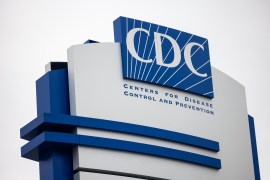Research Roundup: SHOP Marketplaces; Trauma Survival; Redesigning Geriatric Care
Each week, KHN compiles a selection of recently released health policy studies and briefs.
Health Affairs:
An Early Look At SHOP Marketplaces: Low Premiums, Adequate Plan Choice In Many, But Not All, States
This study compared the numbers of carriers and plans and premium levels in 2014 for plans offered through SHOP Marketplaces with those of plans offered only outside of the Marketplaces. An average of 4.3 carriers participated in each state’s Marketplace, offering a total of forty-seven plans. Premiums for plans offered through SHOP Marketplaces were, on average, 7 percent less than those in the same metal tier offered only outside of the Marketplaces. Lower premiums and the participation of multiple carriers in most states are a source of optimism for future enrollment growth in SHOP Marketplaces. Lack of broker buy-in in many states and burdensome enrollment processes are major impediments to success. (Gabel et al., 5/4)
New England Journal of Medicine:
The Affordable Care Act At 5 Years
To gain a greater perspective on the ACA at 5 years, it may help to recall the three basic criteria that, in our opinion, will ultimately be used to judge the effects of the legislation: its effects on access to health insurance and services, on cost of care, and on quality of care. ... First, the ACA has brought about considerable improvements in access to affordable health insurance in the United States. ... Second, the implementation of the ACA has coincided with another important development — a slowdown in the rate of increase in national health care spending. ... Third, if it is premature to draw conclusions about the cost effects of the ACA, it is doubly so for the quality effects of the law. The reductions in hospital-acquired conditions and Medicare readmissions since the enactment of the ACA are unprecedented and encouraging, but here again, the causes of these favorable trends are uncertain. (Blumenthal, Abrams and Nuzum, 5/6)
JAMA Surgery:
Survival Rates In Trauma Patients Following Health Care Reform In Massachusetts
In our analysis, we sought to understand the effect of HCR [health care reform] on survival following traumatic injury by comparing mortality rates in Massachusetts before and after [the state established it own insurance expansion in 2006] with those of a contiguous state (New York) that did not implement HCR. ... We find that although the percentage of uninsured residents in Massachusetts sharply decreased following HCR, the percentage of uninsured trauma patients showed no such inflection. Instead, the percentage of uninsured trauma patients steadily declined during the 10 years surrounding HCR. In addition, we find that HCR in Massachusetts was associated with a transiently increased adjusted mortality rate, accounting for as many as 604 excess deaths during 4 years. (Osler et al., 5/6)
Health Affairs:
Redesigned Geriatric Emergency Care May Have Helped Reduce Admissions Of Older Adults To Intensive Care Units
[A] process improvement team at New York City’s Mount Sinai Medical Center developed the GEDI WISE (Geriatric Emergency Department Innovations in Care through Workforce, Informatics, and Structural Enhancements) model. .... ED triage nurses screened patients ages sixty-five and older to identify those at high risk of ED revisit and hospital readmission. ... ED nurse practitioners identified high-risk patients suitable for and desiring palliative and hospice care, then expedited referrals. Between January 2011 and May 2013 the percentage of geriatric ED admissions to the intensive care unit fell significantly, from 2.3 percent to 0.9 percent, generating an estimated savings of more than $3 million to Medicare. The decline ... cannot be confidently attributed ... because other geriatric care innovations were implemented during the study period. (Grudzen, 5/4)
JAMA Internal Medicine:
Safety And Benefit Of Discontinuing Statin Therapy In The Setting Of Advanced, Life-Limiting Illness
For patients with limited prognosis, some medication risks may outweigh the benefits, particularly when benefits take years to accrue; statins are one example. [Researchers sought to] evaluate the safety, clinical, and cost impact of discontinuing statin medications for patients in the palliative care setting. ... A total of 381 patients were enrolled; 189 of these were randomized to discontinue statins, and 192 were randomized to continue therapy. ... The proportion of participants in the discontinuation vs continuation groups who died within 60 days was not significantly different .... Total QOL [quality of life] was better for the group discontinuing statin therapy .... Few participants experienced cardiovascular events (13 in the discontinuation group vs 11 in the continuation group). Mean cost savings were $3.37 per day and $716 per patient. (Kutner et al., 5/5)
Morbidity and Mortality Weekly Report:
Cancer Screening Test Use — United States, 2013
Regular breast, cervical, and colorectal cancer (CRC) screening with timely and appropriate follow-up and treatment reduces deaths from these cancers. Healthy People 2020 targets for cancer screening test use have been established, based on the most recent U.S. Preventive Services Task Force (USPSTF) guidelines. National Health Interview Survey (NHIS) data are used to monitor progress toward the targets. CDC used the 2013 NHIS, the most recent data available, to examine breast, cervical, and CRC screening use. Although some demographic subgroups attained targets, screening use overall was below the targets with no improvements from 2010 to 2013 in breast, cervical, or CRC screening use. Cervical cancer screening declined from 2010 to 2013. Increased efforts are needed to achieve targets and reduce screening disparities. (Sabatino et al., 5/8)
Georgetown University's Health Policy Institute/The Commonwealth Fund:
Implementing The Affordable Care Act State Regulation Of Marketplace Plan Provider Networks
This brief examines state network adequacy standards for marketplace plans in the 50 states and District of Columbia. We identify state requirements in effect at the outset of marketplace coverage, focusing on quantitative measures of network sufficiency and rules designed to ensure the delivery of accurate and timely provider directories. We then explore the extent to which those standards evolved for 2015. Though regulatory changes were limited in year one, states were most likely to act to promote network transparency and enhance oversight. (Corlette, Giovannelli and Lucia, 5/5)
The Urban Institute/ Kaiser Family Foundation:
Medicaid Expansion, Health Coverage, And Spending: An Update For The 21 States That Have Not Expanded Eligibility
In this report, we provide new projections of the impact of Medicaid expansion ... and costs in states that have not expanded Medicaid. We find that if the 21 states that have not expanded Medicaid as of April 2015 were to do so: The number of nonelderly people enrolled in Medicaid would increase by nearly 7 million, or 40 percent. 4.3 million fewer people would be uninsured. There would be $472 billion more federal Medicaid spending from 2015 to 2024. States would spend $38 billion more on Medicaid from 2015 to 2024. Savings on reduced uncompensated care would offset between 13 and 25 percent of that additional state spending. (Buettgens, Holahan and Recht, 4/29)
The Kaiser Family Foundation:
Medicaid At 50
The Medicaid program, signed into law by President Lyndon B. Johnson on July 30, 1965, will reach its 50th anniversary this year, a historic milestone. At the Kaiser Commission on Medicaid and the Uninsured, where we have closely studied and analyzed Medicaid for nearly 25 years, we are recognizing this important occasion by documenting Medicaid’s evolution and its role in our health care system today. This report reflects on Medicaid’s accomplishments and challenges and considers the issues on the horizon that will influence the course of this major health coverage and financing program moving forward. (Paradise, Lyons and Rowland, 5/6)
Brookings:
Faster, More Efficient Innovation Through Better Evidence On Real-World Safety And Effectiveness
Many proposals to accelerate and improve medical product innovation and regulation focus on
reforming the product development and regulatory review processes that occur before drugs and
devices get to market. ... As drugs and devices begin to be used in larger and more diverse populations and in more personalized clinical combinations, evidence from real-world use during routine patient care is increasingly important for accelerating innovation and improving regulation. ... [The researchers offer] short- and long-term proposals that would bolster the current systems for postmarket evidence development, create new mechanisms for generating postmarket data, and enable individual initiatives on evidence development. (McClellan et al., 4/28)
Here is a selection of news coverage of other recent research:
The New York Times:
Premature Babies May Survive At 22 Weeks If Treated, Study Finds
A small number of very premature babies are surviving earlier outside the womb than doctors once thought possible, a new study has documented, raising questions about how aggressively they should be treated and posing implications for the debate about abortion. The study, of thousands of premature births, found that a tiny minority of babies born at 22 weeks who were medically treated survived with few health problems, although the vast majority died or suffered serious health issues. Leading medical groups had already been discussing whether to lower the consensus on the age of viability, now cited by most medical experts as 24 weeks. (Belluck, 5/6)
The Washington Post:
Study On Premature Babies Raises Questions About Abortion And Medical Care
In hospitals where extremely premature babies are given intensive care, a small fraction of infants are surviving outside the womb earlier than was once believed possible. That finding, from a study published Thursday in the New England Journal of Medicine, is heartening news in the world of pediatrics. But it also adds to a list of questions for parents, doctors and lawmakers by challenging the accepted age for “viability” — a standard that has defined the debates about abortion and intensive neonatal care. (Kaplan, 5/7)
Reuters:
Worse Survival After Lung Cancer Surgery For Residents Of Poor Neighborhoods
Residents of low-income neighborhoods with few high school graduates may be more likely to die after lung cancer surgery than more affluent patients, a U.S. study finds. Researchers reviewed records for more than 200,000 patients who had lung cancer surgery from 2003 to 2011. They found that while factors such as age, gender and other medical conditions influenced survival, so did non-clinical variables like the neighborhoods where patients lived, and the type of hospital where they were treated. (Rapaport, 5/1)
Reuters:
Less Aggressive Diabetes Care Needed In Hospice
Keeping blood sugar under control is an essential part of diabetes care, but for patients in hospice, the goal is to provide the highest quality of life and that may mean less aggressive type 2 diabetes treatment, researchers say. Even though diabetes care guidelines recommend a less aggressive approach to controlling blood sugar when individuals have a limited life expectancy, many hospice patients continue their blood sugar testing and diabetes medications. (Nelson, 5/1)
The Washington Post:
A Step Toward Making Everybody A Universal Blood Donor
Every two seconds someone in the United States needs donated blood, the equivalent of more than 41,000 three-pint donations every day. There’s a perennial need for more donors — particularly donors of type O-negative blood, which doesn’t have the A- or B-type antigens that can provoke an immune reaction in some people. But fewer than 7 percent of Americans have O-negative blood. In a new study published in the Journal of the American Chemical Society, researchers describe a way to transform A and B blood into a type that, like O, could be universally donated. (Szokan, 5/4)
NPR:
Concussions Are Most Likely During Practice In High School And College
Parents worry about a child getting a concussion in the heat of competition, but they also need to be thinking about what happens during practices, a study finds. High school and college football players are more likely to suffer a concussion during practices than in a game, according a study published Monday in JAMA Pediatrics. (Shute, 5/4)






